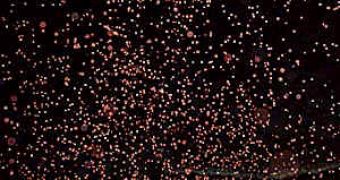You may be turned on by the image of Scarlet Johanson naked, but others have much weirder fantasies. The light of the silvery moon induces such an arousal amongst corals that soon the sea water gets flooded by coral eggs and sperms that turn the water milky. Those pervert astronomers...
The connection between the moon's light and the sexual orgies it induces in corals for several nights after a full moon in late spring has been long known, but no one knew how the corals could make this perfect synchronization, which increases the chances for fertilization.
Now, a team led by Oren Levy of the Center for Marine Studies at the University of Queensland, Australia, investigating corals on Australia's Great Barrier Reef could have unveiled the mystery of how reef-building corals succeed to coordinate their sex lives in connection to the moonlight.
Corals have no eyes (even if jellyfish, their relatives, do have some extremely primitive "eyes") but hundreds of species of corals are still able to detect changes in light, especially blue light, and to react to them. The secret was an ancient type of proteins named cryptochromes, which are sensitive to light.
Cryptochromes are also encountered in mammals and insects, being responsible for the control of the circadian clock, that tunes the daily rhythms. The finding of these proteins in corals increases their age of these timekeeping molecules with many hundreds of millions of years.
"This finding indicates that the basic means used by mammals today to regulate daily patterns was in use at the beginnings of multicellular animals. And it supports the idea that these proteins evolved under the blue light of the ancient seas.", wrote the researchers.
The team compared cryptochrome genes from mice, fruit flies, fish, and frogs to detect four of them in the genome of the fingerlike coral Acropora millepora. Two of the coral cryptochromes are the basic forms from which these proteins in other organisms evolved. They could have enabled the early ancestors of corals and jellyfish to migrate deeper into the water column, to stay away from the sun's potentially deadly UV light.

 14 DAY TRIAL //
14 DAY TRIAL //